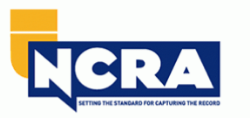Visual aids in trial presentations enhance understanding.
Visual aids in trial presentations enhance understanding.
Blog Article
Just How Test Presentations Enhance Your Disagreement and Encourage Jurors
Trial discussions serve as a crucial system for boosting legal debates and convincing jurors. The strategic usage of visuals not only clears up complicated details but also catches jurors' focus more effectively than words alone.

Importance of Aesthetic Aids
Visual aids play an essential role in enhancing the performance of trial presentations, as they can substantially raise audience involvement and retention of details. In the context of a trial, where jurors are tasked with handling complex info, visual aids offer to streamline and clarify bottom lines. Graphes, charts, and images can share information and ideas that might otherwise bewilder or puzzle jurors, permitting a much more straightforward understanding of the evidence offered.
Moreover, aesthetic aids aid in preserving juror focus throughout the process. By damaging the uniformity of spoken testament, these devices can punctuate vital debates, making them much more memorable. Efficient visual help can additionally stimulate emotional reactions, which can be critical in encouraging jurors to line up with the speaker's narrative.

Crafting Compelling Stories
A compelling story is crucial in test discussions, as it functions as the backbone of effective persuasion. It permits attorneys to weave with each other realities, proof, and psychological components into a systematic story that reverberates with jurors. This narrative framework enables jurors to comprehend the intricacies of the situation while guiding them with the lawyer's debate.
To craft an engaging narrative, attorneys ought to concentrate on clearness and comprehensibility. This includes establishing a clear protagonist-- frequently the customer-- and describing their journey via the events in question. Providing the truths in a sensible sequence improves understanding and maintains engagement. In addition, the usage of dazzling summaries can produce mental pictures that help jurors imagine the occasions, making the narrative extra remarkable.
In addition, integrating essential motifs throughout the presentation reinforces the core message and aids in retention - trial presentations. The story should not only convey details yet also stimulate a feeling of justice, highlighting the risks included. Eventually, a sound story promotes a connection in between the jurors and the case, positioning the attorney's disagreement as both reputable and engaging, thereby raising the probability of a favorable verdict

Involving the Court Psychologically
Efficient jury engagement hinges on the lawyer's capability to link with jurors on an emotional level. This connection can dramatically affect jurors' perceptions and their supreme decision-making.
Visual aids, such as photos or videos, can further enhance emotional interaction, supplying jurors with vivid depictions of the situation's human aspects. Crafting a story that highlights the battles and victories of the people included guarantees that jurors see past the legal disagreements and recognize the human effects of their decisions.
An attorney's passionate distribution can reverberate with jurors, reinforcing their psychological investment in the instance. It's crucial to balance psychological allures with valid proof, making sure that jurors really feel urged to act while remaining grounded in the fact.
Structuring Your Presentation

The body of the discussion ought to be logically segmented right into vital points, each supported by engaging evidence. It is advantageous to utilize storytelling methods to weave facts right into a story that jurors can easily adhere helpful hints to. Visual aids, such as charts and videos, can improve understanding and involvement, aiding to highlight crucial pieces of evidence.
Real-World Study
Analyzing real-world study supplies very useful understandings into the art of test discussions and persuasion. The site situation of "O.J. Simpson v. Individuals of The golden state" highlights exactly how visual aids and engaging stories can sway court understandings. The defense team effectively used a strategy that incorporated high-profile professional testaments with multimedia presentations, which mesmerized jurors and inevitably influenced their choice.
One more significant instance is the "McDonald's Coffee Case," where the plaintiff's attorneys utilized graphic pictures of the injuries suffered by Stella Liebeck. trial presentations. This stark visual proof played a crucial duty in sharing the severity of her burns, leading to a considerable jury award. Such instances show that impactful test discussions commonly pivot on the reliable combination of visuals and narration to stimulate emotional responses from weblink jurors
Moreover, the "Casey Anthony Test" highlighted the value of narrative comprehensibility and reputation. The prosecution's failing to establish an engaging timeline decreased their persuasive power, highlighting the need of a well-structured discussion. Evaluating these instances discloses that effective trial presentations require tactical planning, emotional interaction, and the capacity to resonate with jurors' worths and beliefs.
Verdict
Trial presentations substantially improve debates and persuade jurors through the strategic usage of visual aids, engaging stories, and emotional interaction. A well-structured discussion equilibriums psychological allures with factual evidence, eventually reverberating with jurors' values.
Report this page